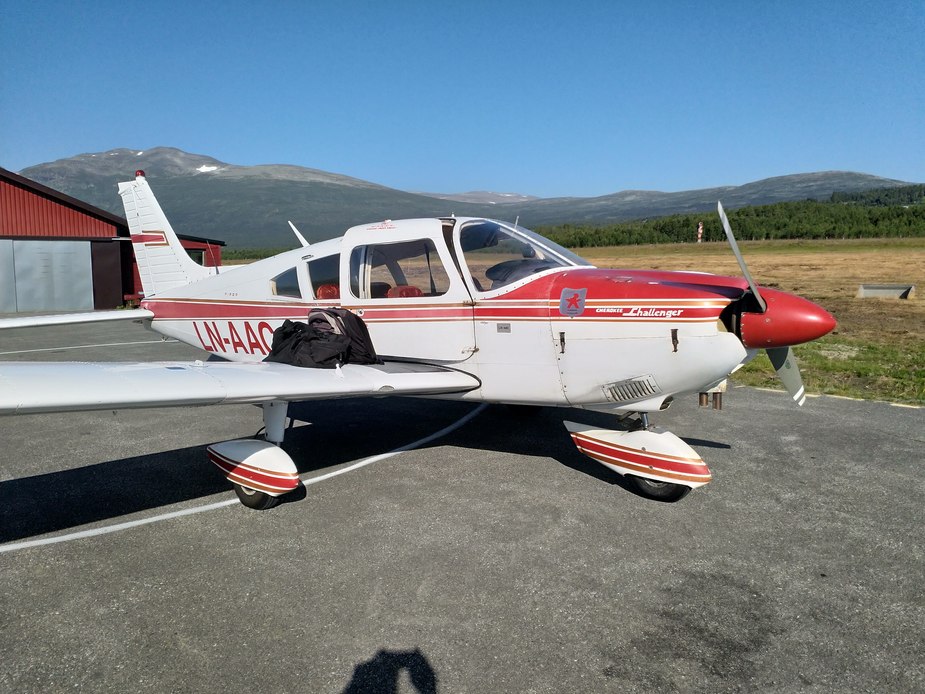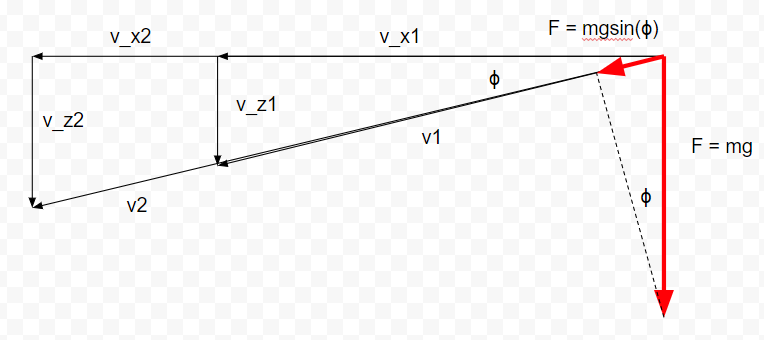Airborne_Again wrote:
I don’t see that anyone said that?
Read this:
Piston_Airplane_Cruise_Performance_pdf
Raven wrote:
What use is a Pipistrel Trainer where I cannot put two people with 2 big luggage suitcases?
What use is a plane anyway? Car, train, boat, donkey – they all can carry suitcases at better MPG than a plane  I don’t fly to carry suitcases
I don’t fly to carry suitcases 
Raven wrote:
Read this:
I would say “this” is wrong;
The common, but mistaken, belief that piston
airplane maximum range improves with altitude is based
either on constant power or constant TAS, neither of
which provides maximum-range flight conditions.
The “mistaken” belief is based on constant IAS I would think, not constant TAS. Power is F*v. With constant power, and decreasing F (less drag), then v has to increase, which is why TAS increases with alt.
LeSving wrote:
I don’t fly to carry suitcases
You should try once. You will realize that you can use the plane for business or vacation 
Please check figure 3 on page 18 of that document. It is consistent with what you say about IAS.
If normally aspirated, and flying at peak EGT or LOP, one does get more MPG with altitude, up to a point, and then it starts to go back down. For NA it tends to be around 8k-10k but the curve has a big flat top.
Raven wrote:
Read this:
That article didn’t say that
The altitude does not change our MPG in a piston plane. It changes the TAS but at higher altitude – we have to fly higher power setting to get the same MPG than at low altitude
It said that maximum MPG does not change with altitude and to achieve maximum MPG at a higher altitude, you need a higher power setting than you do at a lower altitude.
That’s perfectly reasonable as – like the article did say – maximum MPG is achieved at a particular AOA and thus at a particular CAS for a given weight. With a constant power setting the CAS will decrease with altitude.
Raven wrote:
Please check figure 3 on page 18 of that document. It is consistent with what you say about IAS.
So it seems. Hmm, so MPG is constant with altitude (roughly, disregarding secondary effects, propeller efficiency etc). I have never thought of that, but why is that the case? L/D is definitely constant with altitude, and the IAS is constant. Thinking in terms of glider here: True airspeed will increase with altitude, and this also means that for L/D to be constant, the vertical velocity also must increase. All that is done is simply to inflate the diagram, keeping the angles. A glider has constant L/D at all altitudes, but sink rate increases because IAS increases. Now, to keep the sink rate to 0 (cruise setting), this requires power. Thus more power is needed to compensate for increasing sink rate. To keep the sink rate at zero at best L/D therefore requires more power at higher alt. Intuitively I would say that this can be compensated for by flying slower, but that doesn’t work either. The TAS for best rate of descend also increases, and therefore the descend rate as well.
In essence, MPG is constant vs altitude due to, well – geometry. Slightly irritating actually :-)
Raven wrote:
You should try once. You will realize that you can use the plane for business or vacation
What if vacation = flying ? At least once a year I try to take 3-5 days and fly off to tow gliders. No suitcases, only my “pilot rucksack” and a small bag :-) This is from last year. This year it became only a couple of short days.

Airborne – Exactly. I meant Max Mpg.
LeSving – fully agree with you.
LeSving wrote:
In essence, MPG is constant vs altitude due to, well – geometry. Slightly irritating actually :-)
If you fly max L/D angle of attack, you will get max MPG which will be invariant by altitude and doing up/down/level, simply as height = L/D*distance 
If you don’t fly max L/D angle of attack, then altitude will matter for your realized MPG, the higher you go up the better the result
You can also try switching engine ON/OFF climb at 100% and descend on idle that will give roughly the same result as sustain level flight on low power, the resulting total drag, total power, total distance are roughly the same, only caveat is a+b should be close to sqrt(a^2+b^2) which is valid for L/D higher than 10 
Airborne_Again wrote:
It said that maximum MPG does not change with altitude and to achieve maximum MPG at a higher altitude, you need a higher power setting than you do at a lower altitude.
That is the right wording !
On a second thought, or third, or fourth or … 
I cannot understand that this has anything to do with the aircraft at all. It has all to do with the propeller. The propeller also experience the decrease of density, but has to maintain the thrust somehow, and this is very far from intuitive or straight forward IMO, and that paper doesn’t explain any of that. It’s not power that moves the aircraft, it is the thrust. Power is simply an effect of thrust, a result, it is not a cause. Power for anything travelling in a straight line is the force in the direction of the trajectory multiplied with the speed in the same direction. There are two ways of increasing power; Increasing the thrust or increasing the speed. This is easy to see on a glider, gliding in steady air at a good L/D.

The figure show the glider at two density altitudes, 1 is at sea level and 2 is somewhere high up there. The force creating forward thrust is the same, F = mg. The thrust is the same at sea level and at high alt (actually a little bit less high up, but negligible in this context). But, the power, the thrust creates on the aircraft is different. Power = F*v. At high alt, the power is larger than at low alt, even though the thrust is the same.
Then we straighten up the diagram to horizontal flight. We still need the thrust, but now the clean and perfect gravity-thrust cannot help us, because it is perpendicular to the trajectory. Still, we need the exact amount of thrust to move at the same speeds.

If we could create thrust, clean thrust, like a rocket. Then we would see the same as above. The power at low alt would be less than at high alt, simply because the velocities are different, the thrust is the same. Throw away the propeller, install a rocket engine, and the MPG will soar at altitude  (compared with sea level)
(compared with sea level)
What’s wrong with a propeller? This is the tricky part. The thrust of a propeller can be described as (from here):

At higher alt we have decreased density (rho), we have increased aircraft velocity, u_0 for the same IAS. Both of these will decrease thrust. The only way to maintain thrust is to increase u_e. We have to increase it to compensate for decreased density, and for the increased u_0. The thrust can also be described as:

here k_T is a function of advancement ratio, or pitch I presume. This makes sense. To increase thrust we have to increase pitch and/or increase rpm (n). What happens to the torque when we increase thrust ? The torque is given as:

k_Q is a similar function as k_T and includes the advancement ratio, or pitch. Increasing rpm and/or pitch therefore increases torque, which also sounds rather obvious. The thing is, when increasing torque, we increase power, since power = torque times omega.
Somehow the propeller cannot create constant thrust without also requiring more power. It is still not clear to me exactly how and why, but “by magic” this adds up perfectly so the MPG remains constant for a propeller driven aircraft maintaining the same IAS at all altitudes. Since it adds up so perfectly, there should be a simple explanation IMO  It has to do about needing to compensate for both density and aircraft speed, but how?
It has to do about needing to compensate for both density and aircraft speed, but how?
MPG remains constant for a propeller driven aircraft maintaining the same IAS at all altitudes
I have seen this line of argument many times, but I find it hard to believe – simply because of e.g. this
2000ft: TAS 140kt 11.7GPH
10000ft TAS 150kt 10.5GPH
No matter how you shake it, the MPG is way better at 10k.
Now, you did say “constant IAS”. There may be a point there, because the IAS is not constant. I don’t have the 10k number to hand immediately but it is certainly lower than the 138kt IAS at 2k. My plane could not achieve 138kt IAS at 10k unless I went well ROP (“best power”) – because at 10k one is already at wide open throttle, so the only way to get more power is to go rich – and then talking about MPG is not a great idea 